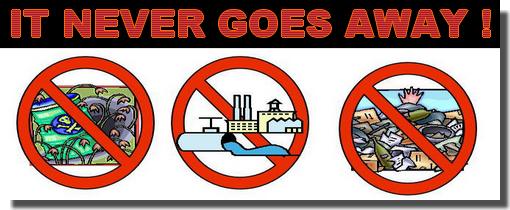Reduce plastic fruit and vegetable packaging
The amount of plastic waste generated annually in the UK is estimated to be nearly 3 million tonnes. An estimated 56% of all plastics waste is used packaging, three-quarters of which is from households. It is estimated that only 7% of total plastic waste arisings are currently being recycled.
Plastics consumption is growing about 4% every year in western Europe.
Plastics are one of the most difficult sections of recycling to understand. There are over 50 different types of plastic; some of which are easier to recycle than others.
It’s easy to see why manufacturers favour plastic as a packaging material. It’s lightweight, hygienic for food products, durable, relatively cheap to produce and is resistant to water spills.
Is plastic bad for the environment?
Plastic can have detrimental effects on the environment for several reasons:
1- Oil.
Around 8% of the world’s annual oil production is used in the production and manufacture of plastic. As a non-renewable resource, it makes sense to cut down our reliance on this and find alternative methods.
2- Precious resources.
Plastics manufacture requires resources such as land and water.
3- toxic chemicals.
Plastics production involves the use of potentially harmful chemicals which are used as colourings or stabilisers.
4- landfill.
Most plastics are non-degradable and sit around in the landfill for up to 1000 years.
5- litter.
nearly 57% of litter found on beaches in 2003 was plastic.
Nearly all my fruit and veg comes in non degradable plastic, what can I do to reduce this?
Here are our seven tips for reducing plastic fruit and vegetable packaging!
1- The first R – Reduce
Take your plastic bags back to the store and fill them with loose vegetables and fruit rather than taking new bags from the supermarket. This usually works out much cheaper than buying pre packaged goods and you don’t get home to find a couple of mouldy pears that have been squashed in the bottom of a pre packaged bag (hands up who has had that happen to them!). Choosing your own also means there is less chance of food waste as you can buy exactly the amount you need.
2- The second R – Reuse
Reuse any plastic packaging your fruit and veg comes in. If you open the bags carefully, they can be used to wrap sandwiches for work. Fruit punnets can be used to grow seedlings in or given to a children’s play group for art projects.
3- The third R – Recycle
Some supermarkets package ranges of their fruit and vegetables in compostable packaging. This can be ripped up and added to your home compost bin.
There are problems with this sort of packaging, however. These plastics will only degrade if they have access to light and air. If you put them in a plastic bin liner and send them to landfill, they will produce methane and contribute to global warming. So only use this packaging if you are willing to compost it yourself.
4- Go naked
Many fruit and vegetables come with their own packaging! Do your bananas, melons, avocados, swede, onions and leeks really need any more packaging than nature provided them with?
5- Sign yourself up
Sign up for a vegetable box scheme. You’ll have fresh, seasonal produce delivered to your door in a cardboard box with no plastic packaging. Each week you give your box back to the driver for refilling. Find details of your nearest home delivery scheme on the Veg box recipes site.
6- Mingle with the farmers
Check out your local farmers market where you can buy seasonal, loose products. Consider getting an Onya weigh bag. It consists of a pouch with 5 strong yet lightweight Tulle bags. They are see through so you can see what is in them when you need to pay for your goods and you can use them as a colander when you get home to rinse your goods. The pouch has a carabiner clip so you can attach the bag to your car keys, belt loop or bag – that way you know you always have it with you.
To find your nearest farmers market, check out farmersmarket.net
7- Grow your own
Why not have a go at growing your own fruit and veg? Even if you grow a few herbs in a windowsill or a couple of pots of beans by the back door, this will all help reduce the amount of plastic you need to use. Tumbling varieties of tomatoes can be grown in a hanging basket, mini veg can be grown in a window box and peppers can be grown in a pot on a large windowsill indoors so you don’t even need a large garden.
Sources: Waste Online
















Polite answers only, but can any one tell me what to do with the red/orange/green net bags that fruit and veg. come in from the big supermakets, can you recycle in sainsburys plastic bag recycling?
@Janet: Hi Janet, I’m not aware that any recycling facilities exist for these bags. It’s always worth calling the free careline number to see what they are made from.
Some people on the site use them for hanging bird food in and other more crafty readers use them on home made cards to add texture and interest. Not sure about any other reuse ideas – is the fruit you buy available loose? It might be time to vote with your money!
True that fruits and vegetables don’t NEED packaging, but some people are allergic to what goes INTO the food. They need the nutrition facts. How are companies going to provide that for us without packages? And what about the other foods? For example, what about Pasta? And Pizza? Not using plastic isn’t as easy as you think. We can’t ban plastic! It’s not resonable! Maybe you should consider this before you post it on internet. Please answer this question with a kind gesture, please. I don’t want another argument!
Max Lee
We can put stickers on fruits and vegetables instead of packaging the whole thing. It’s not a full improvement but its less material than a whole package of plastic. See what I mean? And i guess for Pasta, Pizza, and other things that don’t work as well, we can put them into another ecofriendly bag instead of plastic. There are billions of ways to mprove this world. Hope this answered your questions!:)
It is easier to reduce the packaging and plastic on some things me than others! Keep looking at the packaging and asking what exactly it is and whether it can be recycled! Those fruit nets mentioned above can now be recycled in Sainsbury’s plastics bins (or at least the Sainsbury’s ones which say they can be can be).
@Max: Hello Max, thanks for your thought provoking comment. I hear what you are saying, completely. This isn’t a simple topic with a straight forward answer. I don’t think we can ‘ban’ plastic either but we can do a lot to improve resource management and to stop so much thoughtless waste.
Lots of fruit and veg comes with its own packaging as you know. I appreciate that some packaging can help preserve foods which means less food waste – and I’ll be the first to say that reduce food waste is just as important as tackling the waste packaging issue.
We don’t need to individually wrap prunes (these I have seen). Neither do we need sweetcorn on hard plastic formers wrapped in cellophane – this is excessive. A compostable bag or polythene which is easily reyclable would do.
When it comes to pizza and pasta – cardboard can be used for both. If manufacturers feel that moisture would get in and damage the goods then a layer of polythene could be used that was easily separated from the cardboard for recycling. .
My answer to the issue as a whole is to bring in some kind of legislation where only 3 or 4 types of easily recyclable plastics were used for food packaging. Each would be properly labelled with recycling instructions and all districts would be able to handle the materials for recycling.
Please don’t use nets for bird food. I have seen birds that have become caught in the nets and died a slow death. I always buy loose fat balls rather than those in nets and put them in a purpose made metal fat ball holder. Also, please be careful when disposing of the netting. If they go in the land fill gulls and other scavenging birds get caught in them too.
Probably a bit late on this, but I noticed a few months ago, that on the bags of satsumas. the label says that net and label can be recycled with the carrier bags.
I did write to one of the company that makes/sells bags of chocolate coins to see if their bags were similarly recyclable. but I didn’t get an answer 🙁
@Bev Harris: Hi Bev, thanks for sharing your thoughts about not harming birds with these nets…
@Poppy: Thanks Poppy; weird the nets are made from the same material as carrier bags; they don’t look the same do they?
Hi I’m from Canada and recently moved to the UK and have been generating a lot more plastic waste since I’ve moved here. I’ve noticed that there is much more single-use plastic packaging on fruits and vegetables in many of the supermarkets here, all of which is completely unnecessary. Perhaps going to the source and demanding non packaged fruits and vegetables is the answer.
@Kay: Hello Kay, interesting that you’ve noticed a lot more plastic waste since moving to the UK. Have you come across Jen and Grant from the Clean Bin Project? They are in Canada 🙂 Going to the source is definitely something we promote 😉